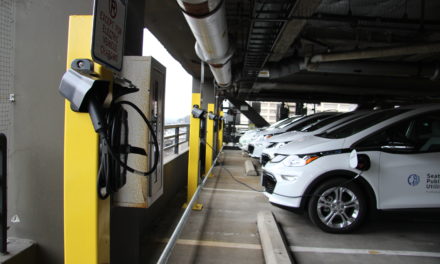From Atlantic Cities:
I had been warned.
When I decided to end my eight-year stint in Washington, D.C. and decamp to Los Angeles last summer, my friends in the capital looked at me like I had announced plans to eject myself into space. They rolled their office chairs toward my cubicle and pressed their hands to my shoulder at happy hours. Los Angeles residents are not like the rest of us, they said. These people were preternaturally tan. They drank their kale. If I moved there with my boyfriend in tow, they told me, I might survive. But I should not attempt to date in Los Angeles. Between dark basement beers during my last month in Washington, my friends presented me a phantasmagoria of single life in L.A.: It looked like skeletal Asian models pair-bonding with balding producers over low-calorie cocktails.
At the time, I wrote off the soothsaying as another symptom of what I had come to see as D.C.’s Stockholm syndrome—a coping mechanism for having settled for a steady, dull job in a too-small town with deficient natural lighting. In the year that followed, I’ve learned that my friends and I were both half right: Washington is for nesters, and Los Angeles is for loners, but this has little relation to our populations’ reputations for titanium SAT scores or prominent cheek bones. In fact, it has very little to do with the people playing the game, and everything to do with the way they are scattered across the board.
To anyone who has actually attempted to date in America’s two most populous cities, these results are puzzling. A closer look at the studies shows that they’re often measuring the best cities for single people to stay that way—depending on your perspective, the worst cities for singles. In New York, Kiplinger’s 2012 count notes, over half of the metro area’s 18.7 million households are unmarried ones (the national average is 28 percent), and one in five people fall between the ages of 20 and 34. Of the Los Angeles metro’s 12.7 million people, 54 percent of households aren’t hitched. Forbes’ 40-city list rates L.A. first in its proportion of single people, and second in the percentage of them who actively date online. New York ranks the highest in online dating—singles in the five boroughs make up 8 percent of the entire user database of Match.com.
For single people looking to actually find a match, that is not a good thing. Forbes and Kiplinger present volume of daters as a positive, but the research of Sheena Iyengar suggests otherwise. Back in the ‘90s, Iyengar noticed something odd about her local luxury grocery store. Though the shop was “renowned for its huge selection of produce, packaged foods, and wine,” Iyengar “often walked out empty-handed, unable to settle on just one bottle of mustard or olive oil when she had hundreds of options.” The experience fueled Iyengar’s research into the psychology of choice. What she discovered were “neurological limits on humans’ ability to process information” that meant “the task of having to choose is often experienced as suffering, not pleasure.” Iyengar concluded that “the explosion of choice has made it more difficult overall for people to identify what they want and how to get it.”
Like a shelf stocked full with fancy mustards, too many potential mates makes it harder to settle on just one. The surplus of singles in New York and L.A. means only that the single person’s wasteland is that much more vast: New York City’s 305-square-mile expanse offers over 8 million people to pick over. After a near decade of dating experience in that environment, my friend Joe Berkowitz tells me, the sheer volume of young singles in the city “gives you the sense that you could meet someone at any time. Most of the time, though, you don’t.” Another friend who uses an online dating site in the city says that the buffet of options means “everyone is looking out for someone better.”
That endless search can prove to be a logistical nightmare. One New Yorker told me that “subway distances can make things grueling,” meaning that budding romances easily die on a stalled L train. (How much subway time are you willing to invest in one date, when every platform appears teeming with other options?) Meeting a potential love interest halfway for a nightcap means being stranded in a no-man’s-land that can prove both inconvenient and awkward. “Nobody drives here,” Berkowitz tells me. “That means nobody’s picking anyone up, nobody’s dropping anyone off—you meet there. A goodnight kiss might require some forethought because you have to factor in, ‘will we be saying goodbye on the subway?’” Less awkward is saying goodbye forever—the city’s geography is “more conducive to breakups” when you likely never have to see one another again.
In Los Angeles, everyone drives, and that presents a related logistical challenge—if New York is too big, Los Angeles is too wide. Not everyone is inclined to navigate three freeways for the chance to get laid, stone sober. And Los Angeles lacks an urban center where young, single people congregate—they live everywhere. Online dating could help bridge the geographic divide, but it hasn’t caught up. At its most precise, OkCupid can pair users with matches within a 25 mile radius. That means that sitting with my laptop in Silver Lake, I’m just as liable to be matched with a romantic prospect living in a Valley cul de sac or anchored offshore somewhere in the Pacific. Some online daters have responded by devoting profile space to announce their refusal to date at points too far east or west. But the city’s sprawl takes its toll online, too. After scrolling through thousands of profiles of age-appropriate dates with socially acceptable character traits, your pool of potential future mates can start to look like so many faces stalled in traffic behind the glass.
And young people in New York and Los Angeles aren’t just competing for dates—they’re elbowing each other for a shrinking pool of jobs, too. While Forbes ranks both cities highly for singles and online dating participation, they rate poorly in job growth and cost of living. Forbes attempts to resolve this distinction by asserting that in number-one-ranked New York City, “financial stresses have brought a shift in priorities for singles,” who are “taking advantage of generous severances and enjoying the spoils of the city … with dates they’ve met online.” In reality, these big cities are sheltering more broke singles with stoked anxieties and broken creative dreams. They spend more free time hustling than they do staring into one anothers’ eyes. Sometimes, it feels easier to just look away. One night at a low-lit Mexican restaurant in Los Angeles, the man at the table next to me asked his bored date, “Have you seen my reel?”
And though the D.C. metro region stretches deep into Maryland and Virginia and counts 5 and a half million residents, the dating scene plays out in a relatively small sandbox. District residents lack the car access of Angelenos and the extensive subway system of New Yorkers. Every evening when happy hour hits, suburban prospects come to them—the city’s population balloons by a million extra workers during the day.
In New York or Los Angeles, the high proportion of singles can feel overwhelming. In D.C., it’s intimate—these people bump into each other on the metro, caffeinate at the same cafes, and unwind at the same bars, week in and week out. A single person can enter a bar full of familiar faces and meet a friend of a friend of a friend before the orange slice hits the bottom of her pint glass. That means that relationships can sprout more organically. And even minor dalliances take on an added significance, for better or worse. One friend in D.C. told me that the scene can be so claustrophobic that dating online means weeding through a selection of coworkers, friends, and friends’ exes. Settling down starts to look better than the alternative. “I slept with someone I never wanted to see again, and now he works 20 feet away from me and is also friends with all of my friends,” she told me. “That is how I feel about D.C.”
Last year’s New Yorker treatise on online dating argued that “dating is an attempt to approximate the collegiate condition—that surfeit both of supply and demand, of information and authentication.” Washington, D.C. is the closest real-life dating scene I’ve experienced to that of a college campus, or else a nursing home—the city where single people go to die. In D.C., the culture of coupling was contagious. Unlike other coastal locales, District singles shack up with a Midwestern zeal. As my years in D.C. ticked on, friends from the furthest reaches of my social network circled one another, then paired off and retired for weeks-long Netflix marathons. When I moved into a room in a new group house, I fell in fast with the boy who lived just a floor below me. We bonded over our housemate’s grammatically incorrect passive-aggressive emails, made out, found a new apartment, developed our own language, adopted a cat, stayed together for three years, and moved to Los Angeles.
So I did bring my boyfriend with me to L.A. When we arrived, it felt like a spell had been broken. It took just a week for us to untangle ourselves, our breakup keeping pace with my boyfriend’s slow consumption of the big pot cookie I had stashed in the freezer. When it was gone, he drove his car across the country and straight to New York. My friends’ warnings came rushing back.
Six months later, I found myself in a strange place—a downtown loft on New Year’s Eve, nowhere to go until midnight, every partier paired off but me and the friend of a friend. He took an interest in me. I recoiled. “Is that what love is now?” I asked my ex-boyfriend later over the phone. “Proximity?” Dating in D.C., I never felt that I loved out of convenience. But there in the middle of 500 miles of sprawl, it was all of a sudden strange to be sitting too close on a couch with the clock ticking down. Los Angeles is not for lovers. Sometimes, it’s good to have some space for yourself.




